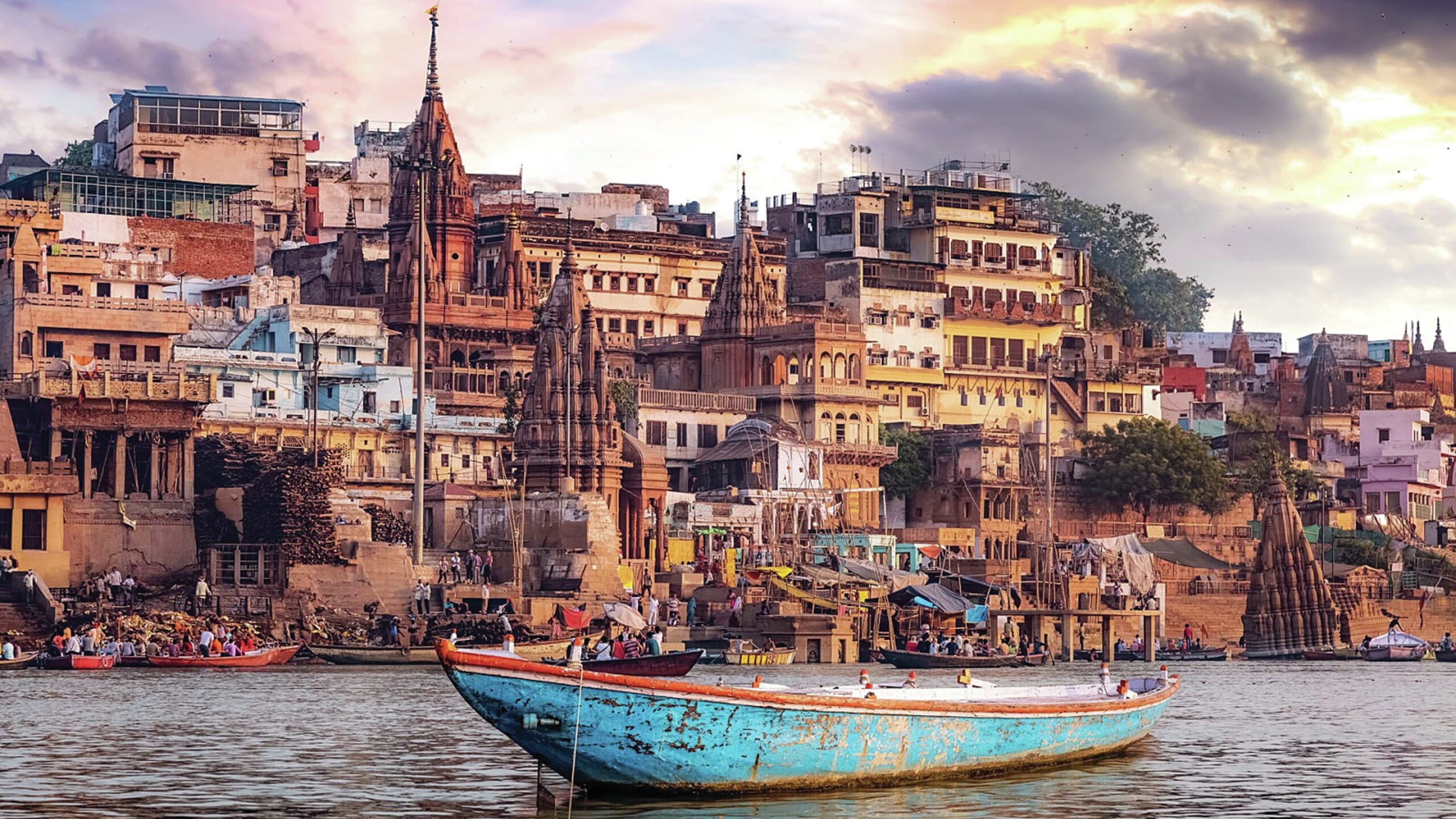
January this year saw the launch of a new luxury river cruise service, one set to ferry high-end tourists to some of the most mystical destinations in India. Fittingly, Varanasi, where the cruise commences, is one of the oldest continually inhabited cities in the world and, perhaps, the most iconic and memorable location in the whole of India.
To the initiated, it is Kashi, the Luminous – the City of Light said to be founded by Shiva, one of the most significant of all the Hindu deities. Regardless of your religious affiliations, it is a truly magical place and one where, for thousands of years, pilgrims have come to wash away their sins in the River Ganges’ cleansing waters.

In all, around 85 ghats (riverfront steps) line the west bank of the Ganges as it passes through the city, making it a popular choice for both devout Hindus taking an early morning purifying dip and for washer folk to beat their clothes. Among the steps are burning ghats, holy sites where bodies are cremated in public, often watched at a respectful distance by boatloads of mourners. Beyond that, many ghats also have their own historical or ritual significance and lingam, a symbol of divine generative energy.
Overall, the best time to visit is dawn when the early morning sun rays light up the myriad temples and ghats while pilgrims perform puja (prayers). Alternatively, dusk offers an ideal opportunity to watch devotees at worship, with viewing these mesmerising daily rituals from a passing rowing boat one of the quintessential Varanasi experiences.

The city itself has more than 700 temples and is a maze of alleyways, with many day tours available for those who want to take in many of the special sites the city has to offer as possible. Particularly popular are the confined alleyways of The Old City, the most famous attraction being the Vishwanath Temple, the main Shiva sanctuary that features 800g of gold plating on the tower and dome. Non-Hindus can climb surrounding buildings to see the gilded dome. Another busy temple is in the south of the city – the monkey temple – and is home to hordes of red macaques and is dedicated to Durga, an exceptionally fierce goddess.

Varanasi also boasts excellent dining opportunities, including some of the best Indian food around and a wide variety of European dishes. Of particular note is the Darbhanga restaurant, which is set just inside the Brijrama Palace Hotel, a structure with striking architecture along the banks of Darbhanga Ghat. Its most popular dishes include palak chaman (paneer in spinach and spices) and allot chaat (fried pieces of parboiled potato mixed with chickpeas and chopped onions, and garnished with spices and chutney).
For a more informal snack, tucked away in a narrow side alley in the Old City is Blue Lassi, a famous hole-in-the-wall yoghurt shop that has been churning out every kind of gorgeous fruit-filled lassi since 1925. The dairy-intolerant, meanwhile, may prefer the nearby Brown Bread Bakery and its singularly fabulous menu.
Also Read: Indian street food-inspired Chaat opens its doors at the Rosewood Hong Kong

If you’re more fashion-minded than food focussed, you may also want to prioritise a visit to the Mehrotra silk factory. It can be found nestling in the labyrinth of lanes behind Lal Ghat and has built up a fine reputation for selling quality silk at reasonable prices.
As is the case on any visit to India, visitors are reminded to be wary of unscrupulous rickshaw drivers who will ferry you off to some inauthentic lookalike place (where they get a cut of everything you spend) rather than your preferred destination. Be insistent and you should be okay.
These considerations aside, no one who has been to Varanasi ever forgets the sheer spectacle of this stunning site’s worship and devotion to the Hindu gods. For those left wanting more of India after such a magnificent introduction – and, really, who wouldn’t – this could just be the first stopping-off point on a luxury cruise, one where far more wonders may well be yours to explore.
(Text: Neil Dolby)
Read the full version of the article in the March 2023 issue (pg: 128). Available on the Gafencu app on Android and Apple.



